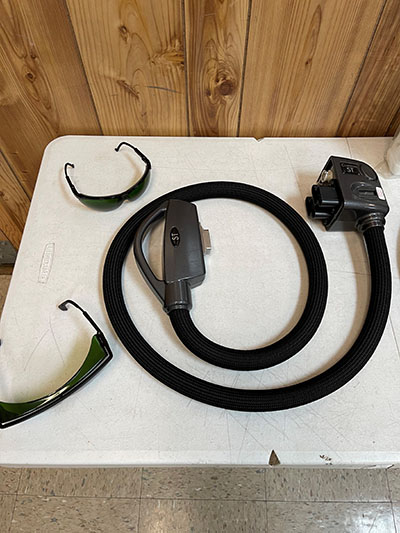Medical Equipment for Sale
- Brand new – still in the box – InBody 770 with BSM 170 stadiometer, laser printer, thumb drive, results sheets, body tissues, and marketing posters - The devices are completely unused and still in their boxes. It has a warranty for another 2 years. I purchased an extended warranty.
- Barely Used — Storz Medical Shockwave. This includes: Storz D Actor 200 Ultra, Two D Actor hand pieces, V Actor High Frequency Handpiece, Tablet with programs, Cupping set with tubing, 20 mm standard applicator, 15 mm standard applicator, 15 mm DI applicator, A6 Acupuncture kit, Three spine applicators with case, 15 mm soft applicator, Ro40 Beam applicator and Nine applicator set with case.
- Brand New – still in box — PNOE. Includes the vest, heart rate monitor, 6 hour battery pack, 2 masks.
- Barely used + including one day of private training -- Mindray TE5 Ultrasound System MSK Package – Triple Connector. This includes 15-inch Seamless Touch Screen, Anti-glare and WideView Angle with IBeam, IClear, itouch and izoom, voice command software, ineedle visual enhancement, 3 probe bundle, Mindray L14-6N Linear array transducer, Mindray C5 1s Advanced Convex array transducer, Mindray L11-3NVNs, Advanced Linear Array Transducer, Mindray UMT 400 mobile trolley.
- Used Once -- EWOT: This includes EWOT MAXX O2 delivery system, EWOT Maxx small re-usable mask, WOT Maxx medium re-usable mask, O2 mask ozone cleaner, EWOT MAXX O2 Altitude training upgrade, EWOT MAXX O2 Altitude tech 10LPM concentrator, EWOT MAXX O2 Hepa Hypoxic filter, EWOT MAXX O2 Hepa Oxygen filter, EWOT MAXX O2 muffler
Please feel free to reach me at [email protected]
2020 Novalis Medical Clareon IPL (New) Multi-Function Intense Pulsed Light Platform. Condition is "Mint.” Rarely Used! Less than 24 hours of service time. Comes with an extra ST and SR hand pieces plus 2 medical laser goggles. Comes with factory warranty and brochure.
Price - $30k (negotiable) shipping $250.
Please contact Wesley Minga at [email protected]


